Aloka Kanungo
In a three-part series, Aloka Kanungo traces the history of the Gotipua tradition – the precursor to modern day Odissi.
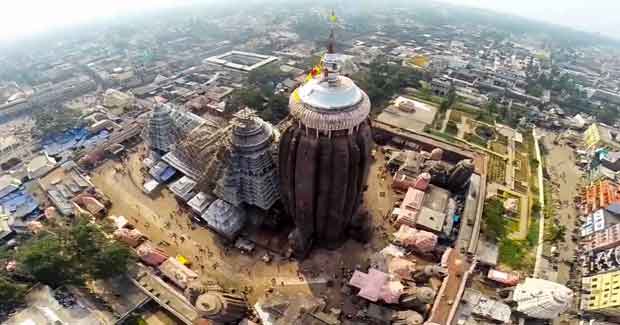
The Jagannath temple that served as the Centre for preservation and propagation of our art, culture, and heritage was a great patron to all the art forms. MAHARIS (Devadasis) was attached to the temple engaged in dancing and singing as their service to the Lord. But there were several attacks on temple of Lord Jagannath and on all the occasions the temple rituals, as well as the services, were suspended for years. Gradually the devadasis lost patronage from both the king and the temple. They were compelled to leave this profession to guard their respectability and honor and preferred to live in oblivion. But it was difficult to avoid the evil eyes and lust of many. So they succumbed to the pressure and came to be associated with concubinage and prostitution. Soon they lost their respectability and prestige. Lack of female dancers in the fear of losing self-esteem must have encouraged the boy dancers to come to the forefront.
The purdah system of Muslim could be another reason to discourage respectable female dancers to perform in the public. So the boy dancers in this situation would have been handy to entertain the Muslim kings and Subedars and also to dance at various social and religious functions. According to another theory, the Vaishnava culture did not approve female company hence their dancing. They preached Sakhi bhava and encouraged the boy dancers.
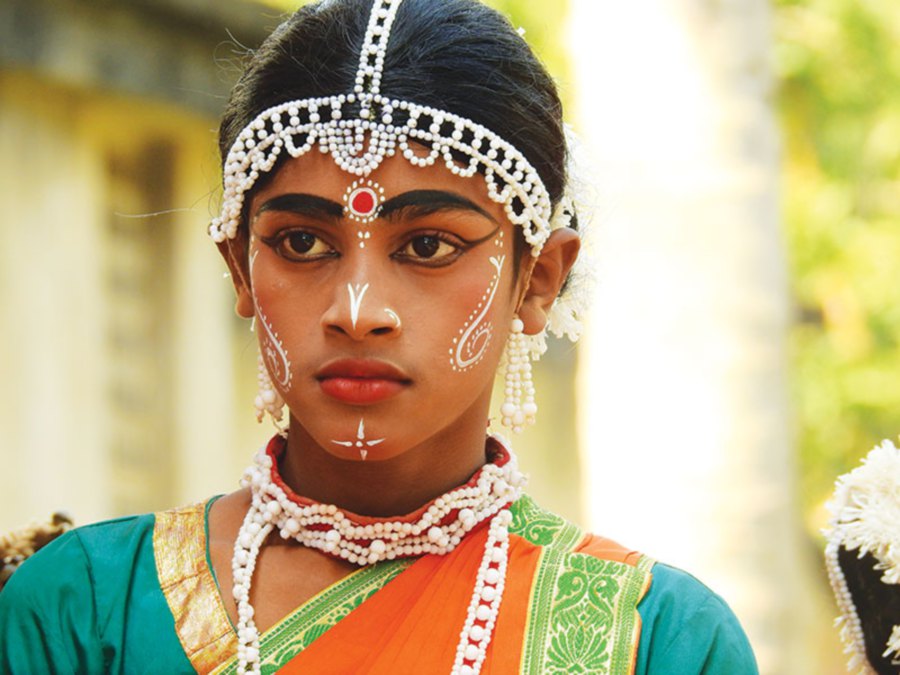
The Vaishnava Mathas provided patronage to the Gotipua troupes. But when the substantial help thinned down they had to travel in groups to earn a living, the acrobatic element in their dance added more color to their dance. In those years of turmoil, it could be a compulsion for them to keep themselves fit to fight the odds. So the boy dancers must have started a fitness program and practiced acrobatics. These could be the possible reasons for the male dancers dominating the dance scene after the post Independence period and kept the tradition of performing acrobatics- BANDH NRITYA.
The Vaishanavite Mathas, Jamidars, and the landlords supported the boy dancers. Gradually this dance gained popularity and many people contributed to enrich this dance style. In the akhadas, the young boys lead the life of the Gurukul system away from their parents, under the strict yet loving supervision of their guru. The akhadas get children from poor couples who decide to bring up their child in the akhadas in the hope the child would at least get two square meals a day and latter years he could engage himself as a dance/music teacher and thus earn his living. Parents often do manat for sickness, other miseries and difficulties and send one of their siblings to be Gotipua as a service to God. Yet others send their children to learn the Gandharva art and few other kids in love with music and dance run away from home against their parents will be in the shelter of akhadas to learn and perform.
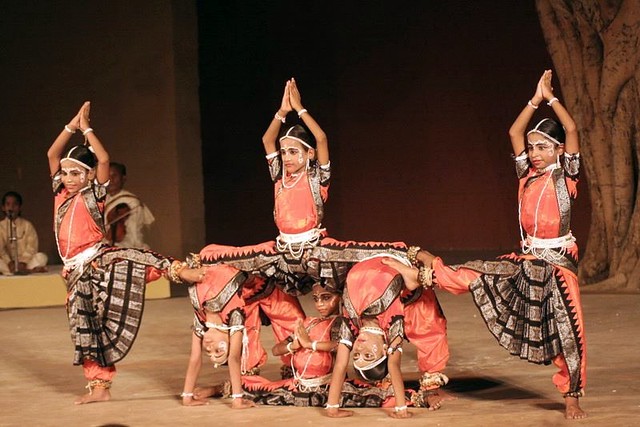
In the akhadas, their day starts early in the morning and lasts up to late in the night if there is a performance. The boys train themselves in Bandha Nritya under the watchful eyes of an adept Guru. They also learn the footwork, hand gestures different postures, movements of neck, eyes, head with their names and practice vigorously for hours. Apart from all these they also get sound training in vocal music, playing khol or pakhawaj (percussion) and harmonium. They have to get by heart all the songs of different popular poets like Banamali Das, Upendra Bhanja and the most favorite- Kabisurya Baladev Rath with each words meaning and proper explanation of the poems.
Nowadays the boys are sent to the schools and a teacher is engaged to keep them abreast of their studies when they travel or are engaged in performances. Passing out from the local school when they become older to be no more considered as gotipua, they cut their hair short, (They maintain at least shoulder-length hair.) and either engage themselves as a dance teacher or enroll in Sangeet Mahavidyalaya to get higher studies. Earlier the option for them was to join the Jatra parties or Theatre Companies.
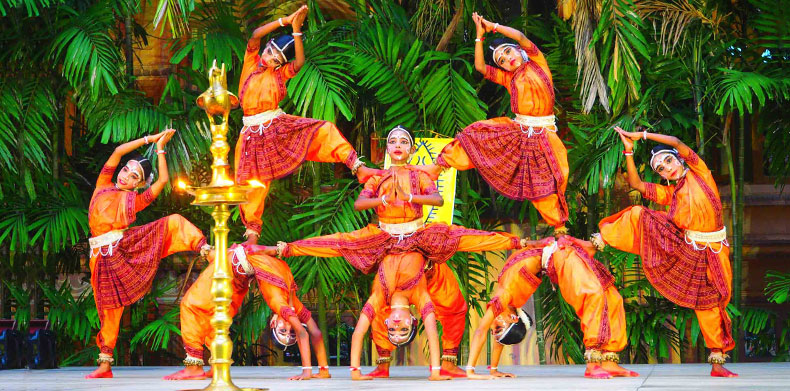
Oil massage is a must to keep their body supple and joints flexible. There were workshops on oil massage. Now a day the Gurus have adopted some methodical massage. Mainly the pelvic, the knees & the spine are massaged with oil. Few also use some herbs in the oil. During the massage the tiny tots are taught Bandhas. There were health hazards among the Gotipuas so gurus are more concerned now. They are fed nutritious diet. Sometimes neighbors donate or Jamidars sponsor at other times they have to support themselves through public performances. That is the reason we see them in big cities and also in foreign countries. They move from place to place and perform at the religious and social functions. Now days The Government of Orissa and Government of India are trying their best to help these traditional dancers. Sangeet Natak Academy, Orissa and Centre for Cultural Resource and Training, New Delhi provide scholarship to the talented and deserving young dancers. Song & Drama Division, India & Eastern Zonal Cultural Centre also helped the troupes by engaging them round the year.
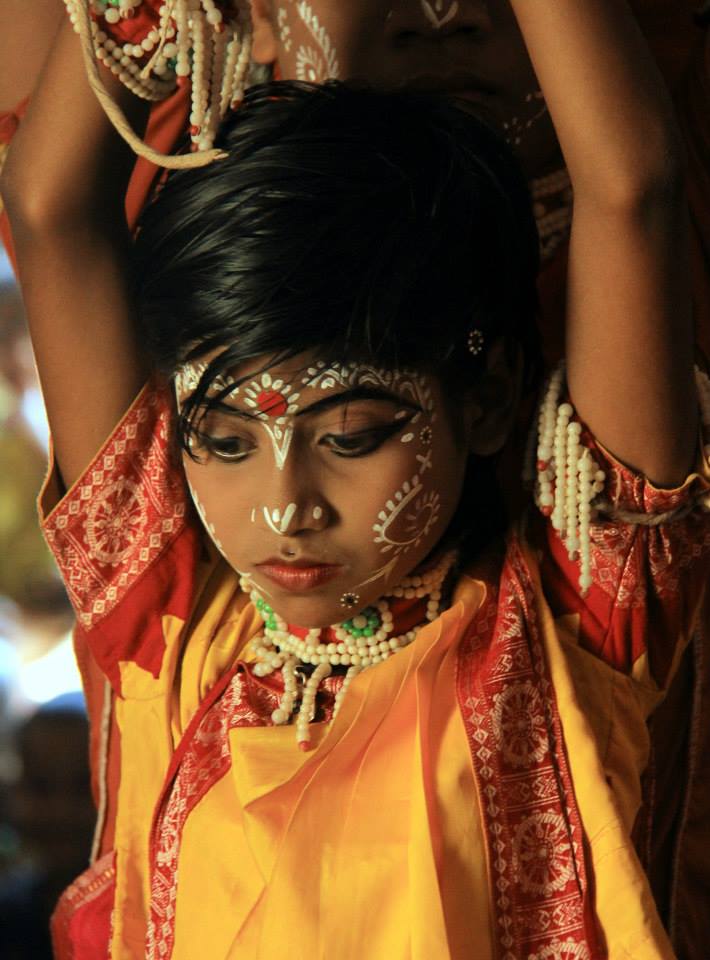
The Gotipua troupe usually consists of at least three musicians and three to four dancers. The pakhawaj player, harmonium player and cymbal player are the three main accompanists. But sometimes they also used to have flute and violin player to make the music better and colorful. There can be as many as eight to ten dancers even more depending on the availability of the boys and the nature of the performance. While performing the dancers also supposed to sing and perform difficult Bandhas- acrobatic feats. But now a day there supported by a singer also.
When the gotipuas lost substantial or total patronage from one definite source, especially after Independence, they started to travel in groups to earn their lively hood. The acrobatic type of dance added more charm to their dance. They were also performing many dangerous difficult feats like lifting a needle from the ground with their eye lids by bending back ward (in Charka Asana Position) or slowly but very tactfully shifting a coin of charana (one-fourth of a rupee) revolving on their little finger like a top. As the groups traveled and met similar other groups they interchanged their ideas and art. So the influence of Sakhi nacha and filmy dances got into gotipua dance, which was later guarded by the senior gurus. In southern Odisha, similar akhadas were also established where young dancers were known as Sangeet pilla. The boy dancers of costal Orissa (In and around Puri) were known as Jagaghara pilla or akhada pilla.
The Akhada pilas and the Sangeet pilas dance at the social and religious functions. They are also attached to several Mathas and temples. They also participate in the rituals of the Jagannath temple. During the Chandan Jatra, they accompanied Lord Balabhadra’s chalanti protima and entertain the lords on a boat in Narendra pokhari. This practice has been discontinued. During Jhulan Jatra they dance at various Mathas.
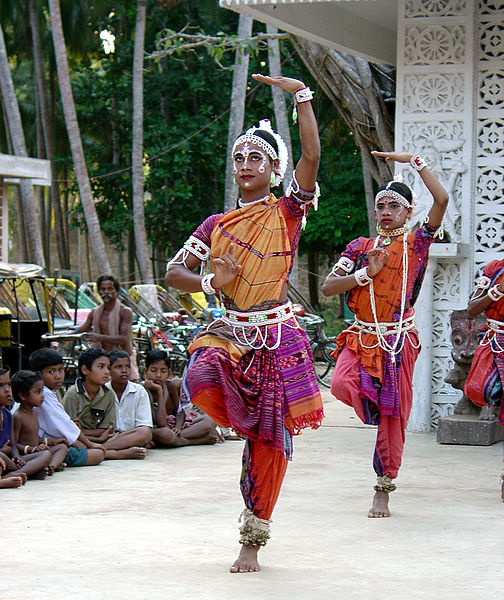
The dance of gotipua begins with customary Mangalacharan with Ganesh Bandana or Guru Bandana. But during this they stand with folded hands. Then they perform either abhinaya or Sthayee Nritya.During the abhinaya they sing themselves. The songs are usually taken from Kishore Chandranan Champu, which revolves around mainly three characters –Radha, Lolita and Srikrishna.Sometimes they also perform to the tune of other Vaishnavite poets such as Banamali Das and Gopal Krishna. The Gotipua gurus introduced Pallavi.Bandha Nritya is usually the concluding item of any Gotipua performance. The ukutas and arasa of Botu Nritya (an item of Odissi) has been obtained from the Gotipua gurus. They used the violin as one of the accompanying musical instrument. Latter, they were also assisted by a singer.
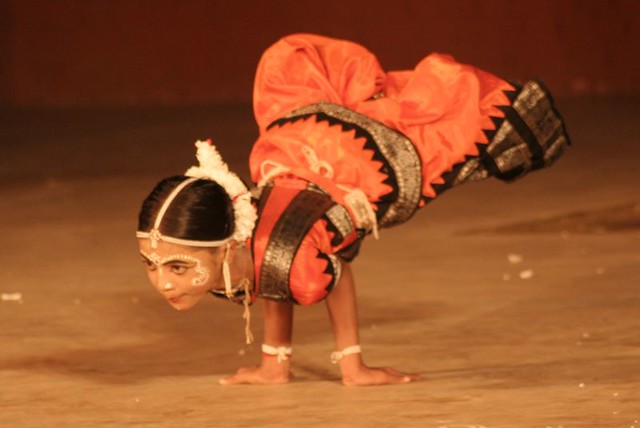
The traditional boy dancers are careful enough about their costume and wear bright colour cotton katki saris. Because they do many acrobatic feats and silk seems to be slippery, they avoid wearing silks and synthetic materials though now they wear stitched costumes made from synthetic materials. Likewise they avoid metal jewellery and painstakingly they make their own jewellery with tiny beads. The gotipuas wear saris in a peculiar style different from the Maharis.They gather the anchal of the sari with pleats in the front, like a fan. It looks nice when they perform in the chowk position.
They cover the upper half of their body with blouse and chadar. They wear flowers made of pith (Sola) around a small bun-like hair dressing (khopa) and gather the excess length on the top, which looks like the tahia. Other noteworthy decorations are intricate Chita of sandal wood paste on their fore head and cheek and the guru kali just above their nose. (To Continue)
(Aloka Kanungo is a famous Odissi dancer and an outstanding exponent of the dance form)






















